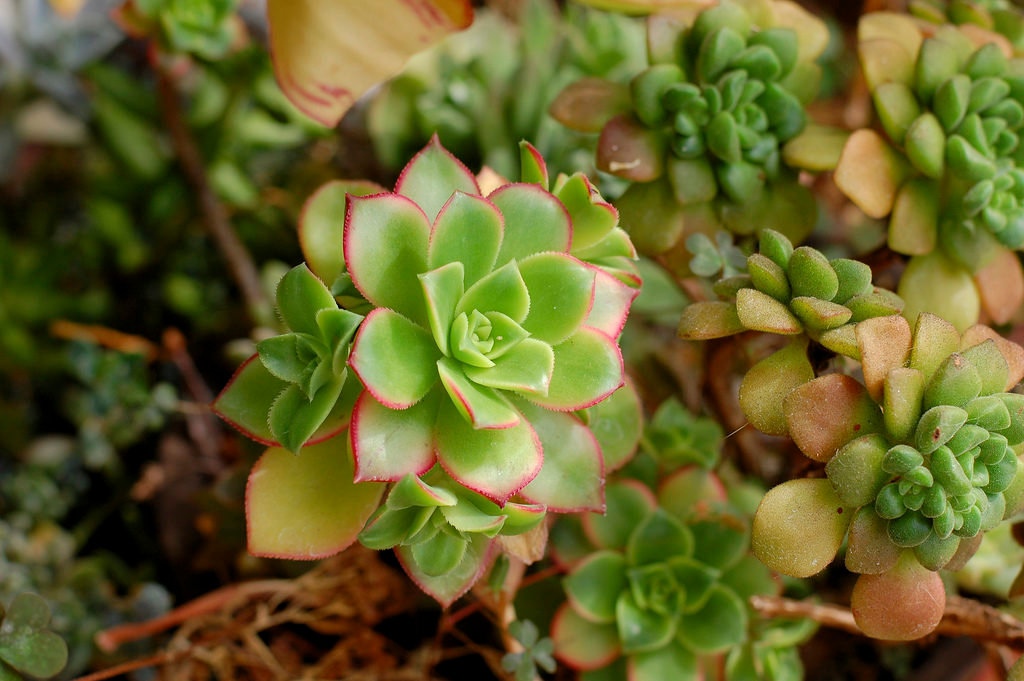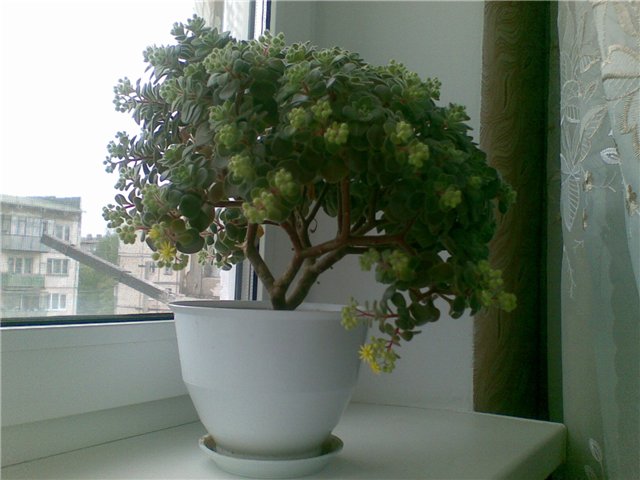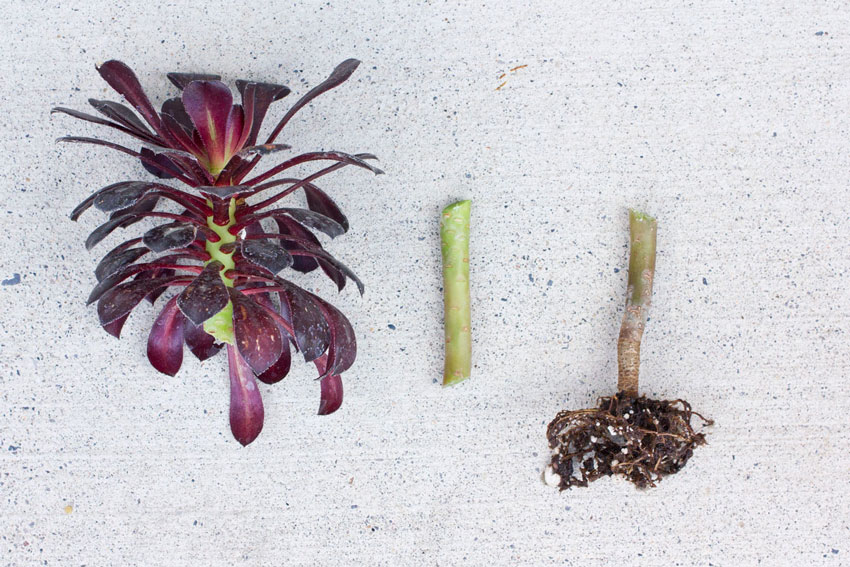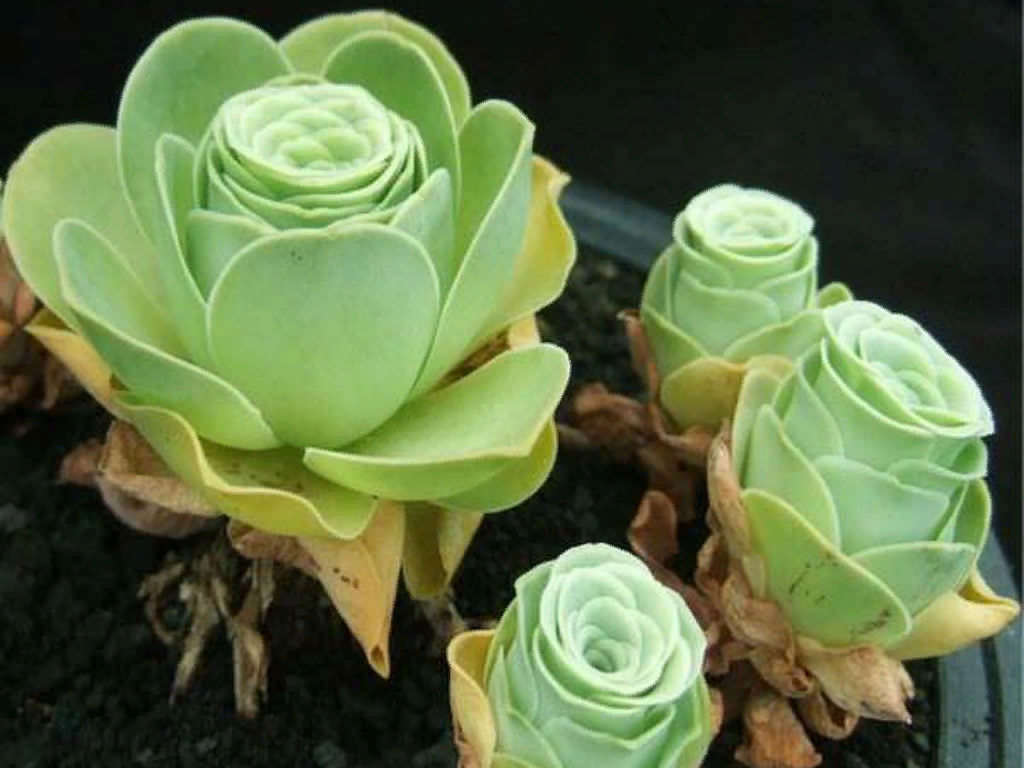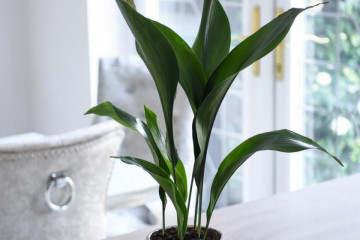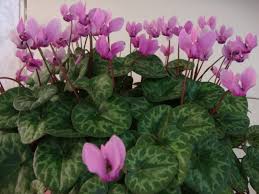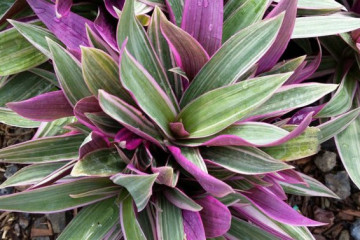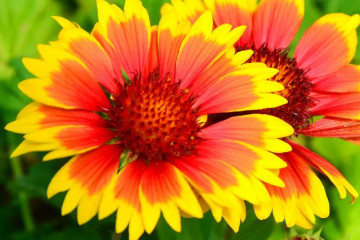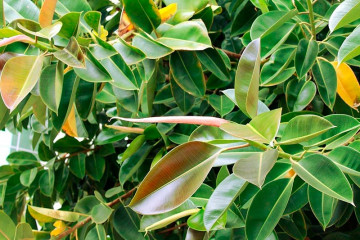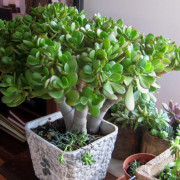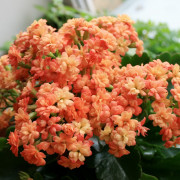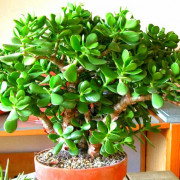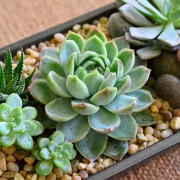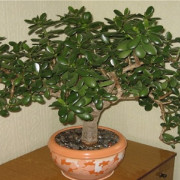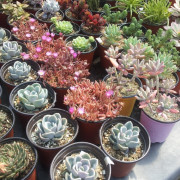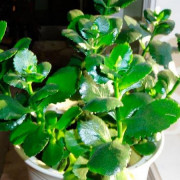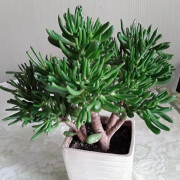Eonium tree - how to care for a flower
Content:
Eonium treelike is an ornamental houseplant that naturally grows in the tropical forests of northern Africa. The shrub has a wide variety of varieties that differ in the colors and variegation of their leaves.
Eonium - what is this flower
The aeonium tree flower is considered to be in the Tolstyankovy family. There are both perennial and annual varieties of this species. If the bush has one outlet, then it will live no more than two years, therefore, in order to preserve it, the reproduction procedure is carried out faster.
The succulent eonium does not have petioles on the leaves, the plates are collected in spiral rosettes. Some varieties have almost naked stems, but there are species with densely spaced plates. They are elongated and pointed towards the edges, very dense and fleshy in structure.
Varieties of home flower
Aeonium species have many amazing characteristics, which is why it is so common to grow it indoors.
- Aeonium undulatum
Small scars are located along the entire surface of the stem of the Eonium Wavy. At the very top of the shoots, leafy rosettes with a diameter of 30 centimeters grow. The bright green leaves are collected in flowering forms.
- Aeonium arboreum
The tree species (Aeonium arboretum) is the most famous of its kind. Its height reaches 1 meter. The main trunk has a slightly brown tint, the crown itself is slightly branched.
Dense leafy rosettes form cupped flowers. The plates are dense in structure, can reach from 10 to 20 centimeters. There are plants with green and dark scarlet leaf flowers.
At a young age, the Eonium Nigrum bush has greenish plates, but the older the plant, the darker the foliage. The variety Shelley, aeonium with lighter leaves, has similar characteristics.
- Aeonium domesticum (Aeonium domesticum)
The domestic species has a short stature - only 15-30 centimeters. The short stem is highly branched and has a brownish-red color. The dark green leaves are spatulate, wider than long. On a high peduncle there are yellow flowers.
- Aeonium decorative (Aeonium decorum)
Decorum, as it is sometimes called, is widely used to decorate interiors and greenhouses. A low plant has a ball crown. At a young age, the leaves are colored green, but over time they begin to turn pink.
The plates are collected in beautiful pink-shaped rosettes and are located on the tops of lignified shoots. Outwardly, the bush looks like a tree with roses.
- Aeonium virgineum
The Virginia cultivar is another flower with a rose-like rosette of leaves. However, it differs in that it has practically no stem. The leaves are colored in a solid light green color.
- Aeonium tiered or disc-shaped (Aeonium tabuliforme)
Aeonium tabuliforme has an unusual appearance. He has one rosette with sheets, which is formed in the form of a pancake with scales.The leaves are small and have a very bright green hue. Blooms in the second year after planting with small yellow flowers.
- Aeonium lindleyi
Aeonium Lindley has small bright green leaves that are very densely located to each other. They form rosettes in the form of baskets.
- Haworth or Kiwi (Percarneum "Kiwi" or Haworthii)
Aeonium kiwi or Haworta is a very unpretentious graceful flower 50 centimeters high.
The fleecy leaves are slightly pointed towards the ends, have a pinkish edging. Air rhizomes are located along the edges of the lateral shoots, with which it is easy to propagate the bush.
- Sedifolium (Aeonium Sedifolium)
Aeonium sedifolium is one of the smallest species. It was bred artificially, therefore it belongs to hybrid varieties.
The small rosettes have fluffy, light green leaves that are sticky to the touch due to the nectar secreted.
Tree aeonium: home care
Caring for any plant involves a number of recommendations. However, the tree aeonium is quite unpretentious, so even beginners can easily cope with it.
Illumination and temperature conditions
You need to start caring for a flower with the organization of the correct lighting and temperature regime. There should be a lot of light, so it is better to keep the flower pot on the south or east windows. During hot summer days, it is transferred to a place with diffused light.
But the temperature should be slightly cool - from +16 to +22 degrees. Therefore, in summer, it is better to take a container with a flower out into the garden or on the balcony.
Watering rules and humidity
A small tree at home should be irrigated only after the top layer of the soil has dried. And in winter, the procedure is completely reduced to 1 watering per month.
Top dressing and soil quality
The bush is fed once a month with ready-made mineral fertilizers for succulents. The acidity of the soil should be neutral.
To increase the acidity, humus is added, and wood ash is added to neutralize it.
Flower container size
The planting container should not be too spacious. It is best to choose not wide, but moderately deep pots, with good drainage and a tray.
Pruning and replanting
The plant does not need pruning, since it has a small number of outlets. Only sanitary procedures are periodically carried out, removing dried leaves.
Aeonium care also includes a transplant, which is carried out only if necessary. Usually it is caused by an insufficient volume of capacity, with the growth of the root system.
Eonium breeding methods
The propagation method of a plant will depend on its species and variety. For stemless aeonium, only the seed method is suitable.
Biennial species are planted with seeds only. First, the seedlings are grown in a box with a substrate and only then are they planted in separate pots.
Other species are propagated by cutting off the top of the stem along with the rosette. This cut can be placed directly into the substrate or water for rooting. The root system should develop at 2 weeks of rooting.
How aeonium blooms, periods of activity and rest
Paniculate inflorescences are located on a firm and thick peduncle. Very small flowers can have different colors: yellow, pink, white.
Eoniums bloom for about 3-4 weeks. The flowering period occurs at different times (depending on the type of flower). Usually this is the beginning of summer - June or July. From November to February, the bush should retire and rest.
Growing problems, diseases and pests
The flower practically does not get sick and does not suffer from pests. Dry air can provoke the appearance of a spider mite, which can be destroyed by washing the bush under the shower.
Sometimes, with excessive watering, root rot occurs, which is why foliage begins to fall off. In this case, the bush is transplanted into a new container and clean substrate. During transplantation, the roots are washed, decayed areas are cut off.
Eonium can have an unusual shape and color of foliage, caring for it at home is very simple. Already in the second year, the first flowers appear, which can amaze with their unusual appearance. Of course, there are few fans of this plant among domestic housewives, but the succulent is confidently gaining popularity.
